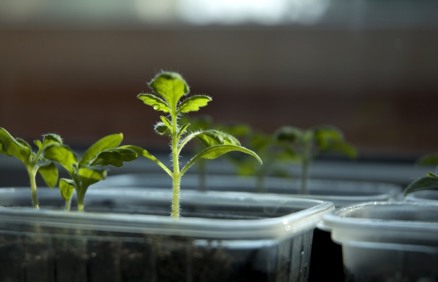Overview on the laws of sprouting seeds in your house for consumption

Many people sprout different types of seeds in the house and eat them after sprouting. What are the laws involved with sprouting in your house? What do we need to know?
Introduction
Many people sprout different types of seeds in the house and eat them after sprouting. Most people sprout different legumes (such as mung beans or chickpeas) and seeds (lettuce seeds, wheat berries, etc.). Two sprouting methods are generally used: 1) Wetting the seeds in a mesh utensil and the remaining moisture triggers the sprouting process or 2) Soaking the seeds in water until the seeds sprout.
Various Laws
- Requirement to separate terumot and ma'aserot from sprouts in Israel
One is not required to separate terumot and ma'aserot from sprouts which sprouted in your house.
Some are stringent and separate terumot and ma'aserot without a blessing.[1]
- Seeds used for sprouting: When is the time for separating terumot and ma'aserot?
Many seeds are eaten whether sprouted or not sprouted, such as garbanzo beans and wheat berries. Terumot and ma'aserot should be separated from these seeds before sprouting them.
Seeds that can be eaten only after sprouting, such as radish or alfalfa, do not require separating terumot and ma'aserot before sprouting (on the need to separate terumot and ma'aser after sprouting, see §1, above).
- Prohibition of kila'im: laws regarding sprouting a mixture of different types of seeds
Kilayim, the prohibition to plant and grow seed mixtures, applies to growing sprouts indoors. Kila'im applies since you want the mixed seeds to sprout together.[2]
- Placing the seeds on mesh screens before Shabbat
It is permitted to moisten or soak seeds before Shabbat, even though some seeds will probably start to sprout on Shabbat.[3]
- Removing sprouts from mesh screens on Shabbat
If you want to use the sprouts on Shabbat, you need to remove the sprouts from the growing container before Shabbat and store them in a storage container (different from where the sprouts grew).
If the sprouts were not removed, they are forbidden to use on Shabbat. Removing the sprouts from the growing container on Shabbat is considered “uprooting a plant from its growing place,” which is forbidden as a subcategory of kotzer, harvesting.[4]
- Sprouting seeds during the shemitah year
During shemitah, it is permitted to sprout seeds on a mesh screen or in a container, as long as the sprouting is done indoors.[5]
[1] There is a dispute (among the Acharonim) whether sprouting (rooting/growing) indoors requires the separation of terumot and ma'aserot. According to Rabbi Mordechai Eliyahu (HaTorah VeHaaretz V 5760, Piskei Halachot, Zera'im p. 31) since an action is performed with the intention to cause sprouting, it is necessary to separate terumot and ma'aserot. Also, some reason that the same laws apply to rooting or growing in water just as rooting or growing in soil (Rabbi Tzvi Pesach Frank). However, many rabbis are lenient and maintain that the laws regarding rooting/growing apply only to rooting/growing in soil, not in water. Moreover, sprouting is an act generally performed indoors, which is additional reason to be lenient. See HaTorah VeHaaretz IV (5759), pp. 33–36 and 37–39, Rabbi Yaakov Ariel and his son Rabbi Azriel Ariel.
[2] There are times we permit short-term sowing of seed mixtures. For example, in the case of “seeding to destroy;” that is, when one type of seed grows it damages the growth of the other seed. In our case, however, the goal is that both types of seeds grow—even if it is only for the short-term. However, some are lenient and allow sprouting seed mixtures where only water vapors are used, maintaining that this does not pose a problem of kila'im. See “The prohibition of kilei zerai'm with sprouting legume mixtures,” Rabbi Yoel Friedemann, Emunat Itecha, issue 89 (5771), pp. 74–76.
[3] This is permitted since the act is completed as soon as the seeds enter the water. The actual sprouting occurs afterwards, with no further action needed on Shabbat (Shulchan Aruch, OC, §252:1). It is the accepted practice to sow fields on any day of the week without the concern that the sprouting might occur on Shabbat.
[4] Thank you to Rabbi Ehud Ahituv for this insight. See Emunat Itecha, issue 100 (5773), pp. 22–23.
[5] See Rabbi Yaakov Ariel in HaTorah VeHaaretz IV (5759), pp. 37–39 and Rabbi Yehuda Amichay, HaTorah VeHaaretz VI (5761), pp. 360–363. Indeed, note that some consider a floor, adjacent to the earth (resting on the ground) or the floor of a ground level apartment (floor 0) nullified and like earth underneath it (Minchat Shlomo I, §41:2). According to this opinion, planting in these locations is considered planting in the ground. Those who wish to be stringent, following the above opinion, should sprout during shemitah in an unperforated vessel.




